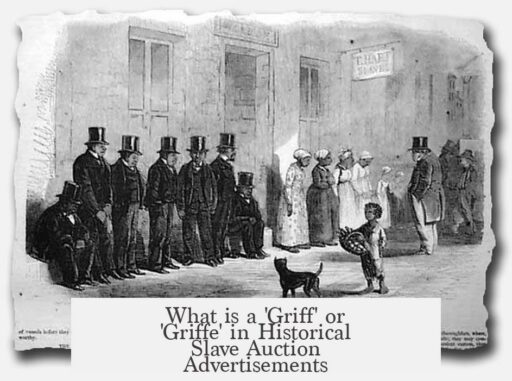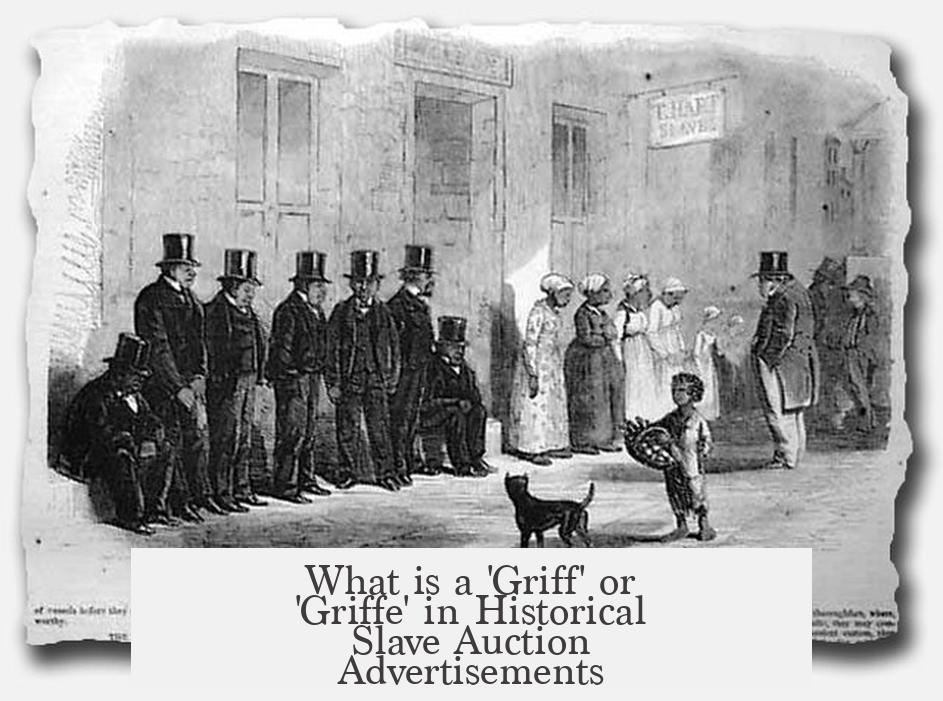A “griff” or “griffe,” as seen on old slave auction advertisements, refers to a racial classification describing a black slave with lighter brown skin, indicating some white ancestry but less than a mulatto. The term generally describes a person with more than 0% but less than 50% white ancestry, often around one-quarter to two-fifths white.
This classification was used primarily in mid-19th century Louisiana, especially in New Orleans. Advertisements mentioning “griff” or “griffe” often appear alongside geographic references like Magazine Street, linking the term to that region. It indicated a slave who was mixed-race but whose exact degree of white ancestry was uncertain.
Skin color served as the main indicator of racial classification at the time, used as a proxy for ancestry despite its imprecision. This approach reflects the era’s focus on visible traits to categorize people legally and socially in slavery contexts. Terms like mulatto, quadroon, and griff all fall along a spectrum based on perceived mixed heritage.
Historical records and academic research, such as Walter Johnson’s article “The Slave Trader, the White Slave, and the Politics of Racial Determination in the 1850s,” confirm the term’s usage in slave trading contexts. Johnson highlights how racial terms were applied variably without strict definitions.
The Online Etymology Dictionary notes that “griff” and related terms had uncertain connections and appeared in different contexts. For example, in late 18th century India, “griff” referred to a “newly arrived European,” showing its meaning was place-specific.
In Louisiana, “griff” generally meant a slave with mixed black and white ancestry but with less European lineage than a mulatto. It functioned as a social and legal label within the caste-like structure imposed on enslaved populations.
- Griff/griffe denotes mixed-race slaves with less than 50% white ancestry.
- Primarily used in mid-19th century Louisiana, especially New Orleans.
- Skin color was the main, but imprecise, measure of ancestry.
- The term had different meanings in other regions, like India.
- Reflects historical racial classification systems in slavery.




